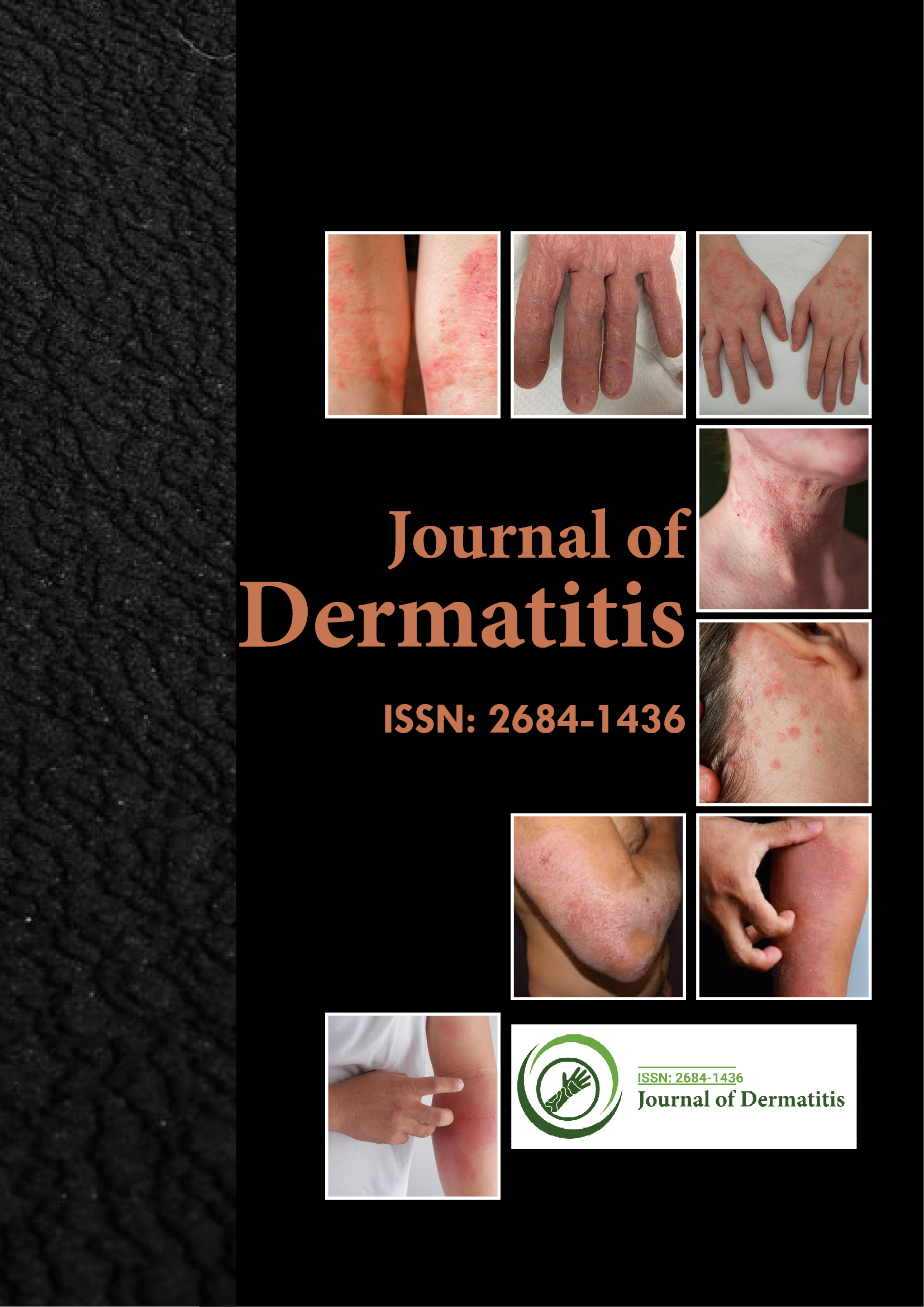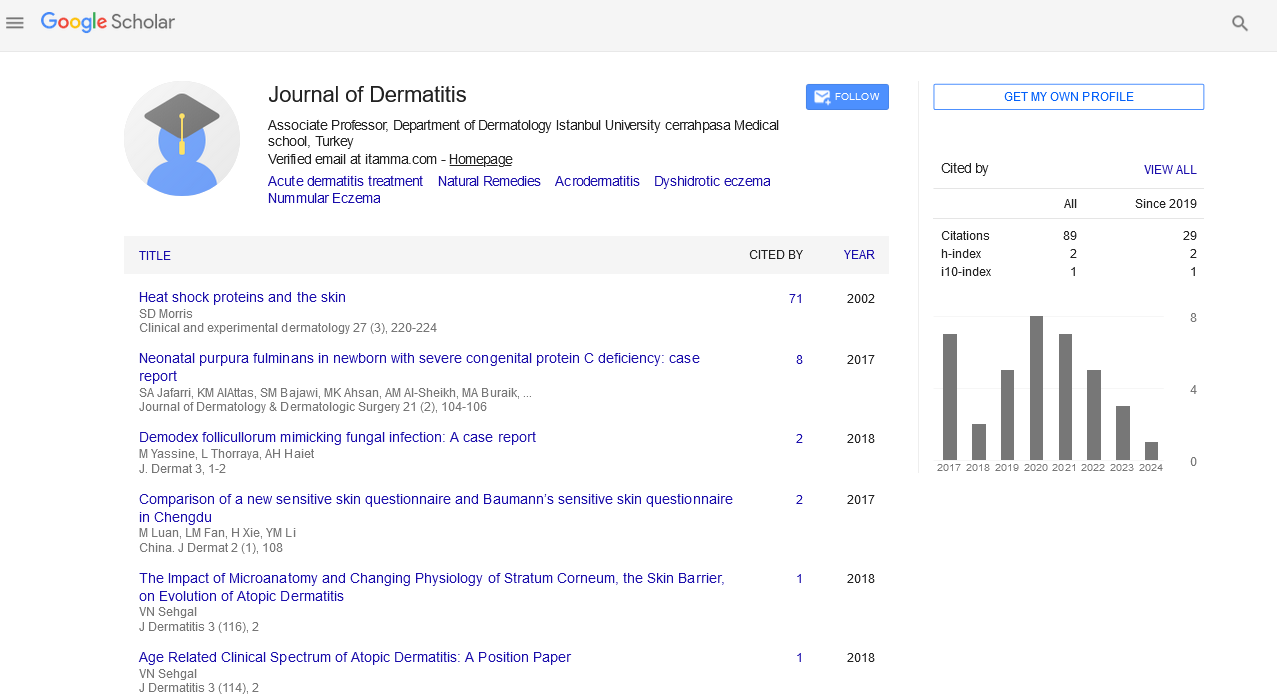Indexed In
- RefSeek
- Hamdard University
- EBSCO A-Z
- Euro Pub
- Google Scholar
Useful Links
Share This Page
Journal Flyer

Open Access Journals
- Agri and Aquaculture
- Biochemistry
- Bioinformatics & Systems Biology
- Business & Management
- Chemistry
- Clinical Sciences
- Engineering
- Food & Nutrition
- General Science
- Genetics & Molecular Biology
- Immunology & Microbiology
- Medical Sciences
- Neuroscience & Psychology
- Nursing & Health Care
- Pharmaceutical Sciences
Commentary - (2022) Volume 7, Issue 3
Acrodermatitis Enteropathica Infection due to Deficiency of Zinc in a Breast-Fed Infant
Bhajun Huang*Received: 05-May-2022, Manuscript No. JOD-22-17068;; Editor assigned: 09-May-2022, Pre QC No. JOD-22-17068(PQ); Reviewed: 18-May-2022, QC No. JOD-22-17068;; Revised: 24-May-2022, Manuscript No. JOD-22-17068(R); Published: 03-Jun-2022, DOI: 10.35248/2329-6925.22.7.154
Description
Acrodermatitis enteropathica is a rare skin infection that is most commonly observed in children and is related to zinc deficiency. Zinc is an important micronutrient that is required for the proper operation of the body's metabolic and biochemical pathways. Patients who are given zinc have a 100% response rate, but without it, the disorder can lead to death. This activity explores the diagnosis and treatment of Acrodermatitis Enteropathica (AE) patients, emphasizing the importance of the interprofessional team in identifying and managing these patients.
Zinc is an important micronutrient that is found in over 200 metalloenzymes and is needed for the proper functioning of the body's metabolic and biochemical pathways. Mutations in the zinc transporter gene SLC39A4 (solute carrier family 39 member A4) cause AE, which causes improper zinc absorption in the intestine.
Brandt initially described AE in 1936 and Dan Bolt later defined it as a unique disease. Zinc deficiency, which can be caused by malabsorption syndromes, liver or renal illness, dietary choices, or iatrogenic reasons, can mimic the symptoms of AE.
Pathophysiology
Zinc is found in a wide variety of metalloenzymes and transcription factors and it plays an important role in cellular activities. It is important for nucleic acid and protein synthesis, wound healing, appropriate immunological function and freeradical scavenging, among many other activities. But since stored zinc cannot be freely exchanged, metabolic requirements must be satisfied by dietary zinc intake.
Human breast milk contains a zinc-binding ligand that improves the bioavailability of zinc in human breast milk, which is missing in animal milk. Endotracheal zinc absorption is regulated by the transporter protein ZIP4 in the small intestine, especially in the jejunum. Mutations in the gene that codes for this protein limit adequate enteric zinc absorption, resulting in zinc deficient symptoms in those who are affected.
Red spots appear on child's skin over the course of three to four days. These spots can develop anywhere on the body, but the arms, thighs and buttocks are the most common. The spots usually travel gradually toward the face in most cases. The red spots may start to turn purple as the illness develops. When capillaries that is small blood vessels begin to bleed blood into the affected areas, this is a common occurrence. These spots gradually turn into itchy, fluid-filled blisters.
A child may also experience swelling and tenderness in the abdomen and lymph nodes. These symptoms can last 2-3 months. Copper-colored skin patches can also be a sign of dermatitis. The patch may be flat and firm to the touch. If hepatitis B is the root cause of dermatitis, the child's skin and eyes may turn yellow. This is a symptom of jaundice; jaundice usually appears within 20 days after the onset of symptoms.
Standard treatment
Acrodermatitis enteric dermatitis is treated with a zinc preparation in the form of zinc sulphate. These supplements should be given as soon as the disorder is diagnosed and should last a lifetime. The drug diyodkin (hydroquinone) is another treatment that usually eliminates symptoms within a week. If the disorder is caused by intravenous administration, adding zinc supplements to the diet can prevent and eliminate the symptoms of AE. Genetic counseling is recommended for families of patients with congenital Acrodermatitis enteric dermatitis.
Citation: Huang B (2022) Acrodermatitis Enteropathica Infection due to Deficiency of Zinc in a Breast-Fed Infant. J Dermatitis.7:154.
Copyright: © 2022 Huang B. This is an open access article distributed under the terms of the Creative Commons Attribution License, which permits unrestricted use, distribution, and reproduction in any medium, provided the original author and source are credited.

